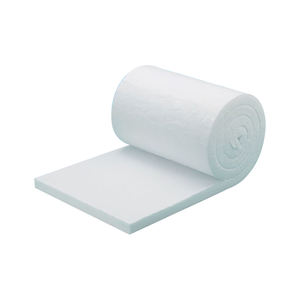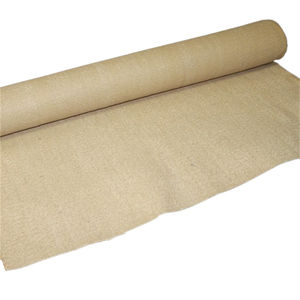Professional industry ceramic supplier, silicon nitride, silicon carbide, aluminum nitride and any other kinds of ceramics.
PRODUCT PARAMETERS
Description
Overview of Ceramic Fiber Blanket for High-Temperature Kiln Linings, Excellent Thermal Shock Resistance
Ceramic Fiber Blanket for High-Temperature Kiln Linings, Excellent Thermal Shock Resistance is a lightweight, high-temperature insulation material composed primarily of alumina-silica. It is manufactured through a melting and spinning or blowing process, resulting in a flexible, wool-like textile. This material is engineered to provide exceptional thermal management, conserving energy and protecting equipment in extreme temperature environments across various industries.
Features of Ceramic Fiber Blanket for High-Temperature Kiln Linings, Excellent Thermal Shock Resistance
-
Excellent Thermal Stability: Withstands continuous operating temperatures up to 1260°C (2300°F) and higher for certain grades, with minimal shrinkage.
-
Low Thermal Conductivity: Provides highly efficient insulation, reducing heat loss and improving energy efficiency.
-
Lightweight & Low Heat Storage: Offers low thermal mass, enabling rapid heat-up and cool-down cycles for improved process control and energy savings.
-
Thermal Shock Resistance: Highly resistant to damage from rapid temperature changes.
-
Excellent Flexibility & Resilience: Can be fabricated into blankets, boards, papers, and textiles to fit complex shapes and applications.
-
Good Chemical Stability: Resists attack from most corrosive agents, except strong alkalis and hydrofluoric acid.
Specification of Ceramic Fiber Blanket for High-Temperature Kiln Linings, Excellent Thermal Shock Resistance
Ceramic fiber blanket is a great material for lining high temperature kilns. It handles extreme heat very well. This blanket excels at thermal shock resistance. It does not crack or break when temperatures change quickly. This makes it perfect for kilns and furnaces. The heat cycles in these places are intense. The blanket stays strong.
It is made from spun ceramic fibers. This structure gives it low thermal conductivity. Heat does not pass through it easily. This keeps the heat inside the kiln. It saves energy. It also protects the outer structure. Workers stay safer. The kiln uses less fuel.
The blanket comes in different thicknesses. Common options are 25mm, 50mm, and 100mm. You can choose what fits your kiln. Density is important too. Standard density is about 128 kg/m³. Higher density offers better strength. Lower density is more flexible. Both types provide good insulation. The maximum service temperature is high. It withstands continuous heat up to 1260°C. Short bursts can reach even higher. This covers most industrial heating needs.
Installation is simple. The blanket is light and easy to cut. Workers shape it to fit the kiln walls and roof. It attaches with pins or adhesive. This saves time during setup or repairs. It lasts a long time. It resists chemical corrosion well. Hot gases inside the kiln do not damage it quickly. The lining stays effective. Maintenance costs go down. Production runs smoother.
Applications of Ceramic Fiber Blanket for High-Temperature Kiln Linings, Excellent Thermal Shock Resistance
Ceramic fiber blankets are essential for lining high-temperature kilns. These kilns face extreme heat. The blankets handle that heat very well. They are made from special ceramic materials spun into fibers. This creates a soft, flexible blanket. It insulates better than traditional bricks. The blankets are light too. This reduces the load on the kiln structure.
Heat shock is a big problem for kiln linings. Materials crack when temperatures change fast. Ceramic fiber blankets resist this shock effectively. They don’t crack easily. This means the lining lasts longer. It saves money on repairs and replacements.
The blankets trap heat inside the kiln efficiently. Less heat escapes. The kiln reaches the desired temperature much faster. This saves a lot of energy. Energy costs go down significantly. It is good for both the budget and the environment.
Installing these blankets is straightforward. They can be cut to size easily. Workers shape them to fit curves and corners perfectly. No special skills are needed. The installation time is much shorter than laying bricks. Downtime for kiln maintenance is reduced.
These blankets work well in many kiln types. They are common in ceramic kilns, pottery kilns, and heat treatment furnaces. They are also used for backup insulation behind brick linings. This provides extra protection and efficiency. They are versatile and reliable insulation.
Company Profile
Tanki New Materials Co.Ltd. focus on the research and development, production and sales of ceramic products, serving the electronics, ceramics, chemical and other industries. Since its establishment in 2015, the company has been committed to providing customers with the best products and services, and has become a leader in the industry through continuous technological innovation and strict quality management.
Our products includes but not limited to Aerogel, Aluminum Nitride, Aluminum Oxide, Boron Carbide, Boron Nitride, Ceramic Crucible, Ceramic Fiber, Quartz Product, Refractory Material, Silicon Carbide, Silicon Nitride, ect. please feel free to contact us.

Payment Methods
T/T, Western Union, Paypal, Credit Card etc.
Shipment Methods
By air, by sea, by express, as customers request.
5 FAQs of Ceramic Fiber Blanket for High-Temperature Kiln Linings, Excellent Thermal Shock Resistance
What is a ceramic fiber blanket? It’s a lightweight insulation material. It’s made from spun ceramic fibers. These blankets handle very high temperatures. They are used to line kilns and furnaces.
What temperature can these blankets handle? They handle temperatures up to 2300°F. Some special grades go even higher. Check the product specifications. Always pick the right grade for your specific kiln temperature.
Why is thermal shock resistance important? Kilns heat up fast. They cool down fast too. Sudden temperature changes stress materials. Ceramic fiber blankets handle these changes well. They don’t crack easily. This makes them last longer.
How do you install a ceramic fiber blanket? You cut it to size. You shape it to fit your kiln. You attach it using special clips or ceramic anchors. You can layer multiple blankets. This improves insulation. Wear gloves and a mask during installation. The fibers can irritate skin and lungs.
What are the advantages over other linings? Ceramic fiber blankets are very light. Heavy brick linings need strong support structures. These blankets don’t. They save energy. They keep heat inside the kiln better. They install faster than brick. They offer good noise reduction too.
REQUEST A QUOTE
RELATED PRODUCTS
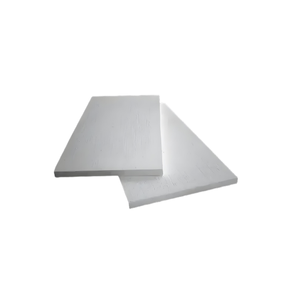
High-Purity 1260 1400c Ceramic Fiber Board Insulation, High-Density Molded Refractory Ceramic Fiber Inorganic Board

2018 factory-made ceramic fiber products
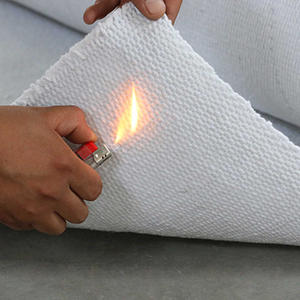
Biosoluble Silicate Alumina Ceramic Fiber Board, High-Quality Ceramic Fiber Board
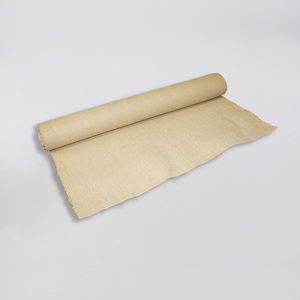
13mm large stock of 30g surface fireproof mats, ceramic fiber fabric, glass fiber cloth for insulation.

Ceramic fiber blanket, heat-resistant wool furnace, ceramic fiber product , ceramic fiber board
